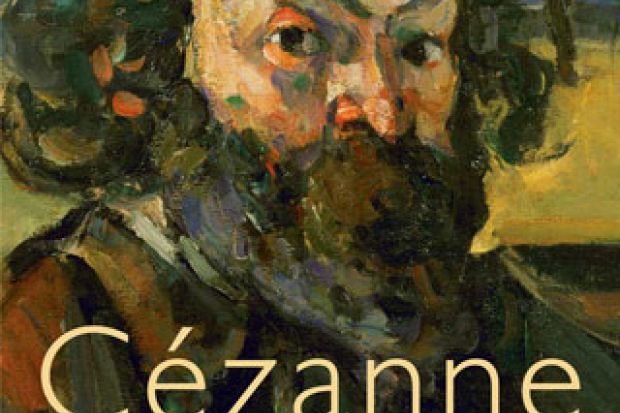For most of the past century, Paul Cézanne (1839-1906) has been revered as one of the great modern artists, the painter whose landscapes, nudes and portraits galvanised a generation including Henri Matisse, Pablo Picasso and most of those we associate with the modern tradition. Alex Danchev’s biography, written in a light, lively style, begins with the Cézanne retrospective in 1907 at the Salon d’Automne, the moment when this influence began to blossom.
It was here that two of his three large Grandes baigneuses were shown, works that were to sear themselves on the imagination of the avant-garde. However, interest in Cézanne had begun to stir much earlier, spurred on more by rumour and legend than by actual knowledge of his work, which remained largely inaccessible until the series of exhibitions at Ambroise Vollard’s gallery in the 1890s. Contemporary criticism shows how perplexing and obdurate Cézanne’s painting seemed, even to admirers, with its odd distortions of perspective and lack of traditional skills. Cézanne’s own statements about his art only added confusion. While insisting on the primacy of his sensations as the basis of his painting and the need to see nature afresh, his nudes, by contrast, were replete with references to the grand tradition and executed without models.
As Danchev realises, if today Cézanne is recognised as a modern master, this has much to do with the way we see his work through the prism of what later Modernist artists and writers made of it. For Cézanne has not only been one of the most fertile sources for modern art, but has inspired some of the richest and most innovative art historical writing. Although much of this literature describes Cézanne’s art in purely formalist terms as an artist solely devoted to finding a new style of painting, his work has also encouraged diverse kinds of interpretation, from phenomenology to psychoanalysis. While Danchev draws on this tradition, his book reflects many of the critical tensions of the scholarship. Prefaced by a quotation from Paul Valéry - “The point is to give value to the man, just as he is, whatever he may be” - this biography attempts to recover the personality behind the art.
However, Danchev makes little attempt to distinguish between the culture in which Cézanne worked and the legacy of the later reflections his work provoked. The patchwork of conflicting ways of understanding Cézanne, freely ranged across, leaves an abiding impression of the difficulties faced by a biographer committed to unveiling the “truth” behind the enigma of the artist.
Few artists, moreover, offer such recalcitrant material for the biographer. Much of Cézanne’s life remains undocumented and there are looming gaps in both his correspondence and the body of work he produced; in the 1880s, he burned much of his early work. Despite this, from the beginning, the reception of Cézanne was intimately tied to the characterisation of the artist. His career was made in the period that saw the ascendance of biography and the idea of art as personal expression. Many of the artists who knew Cézanne recorded their reminiscences of the aloof, taciturn and irascible painter; few, however, knew him well. The man they portray seems more like an eccentric figure sprung from one of Alphonse Daudet’s comic novels than flesh and blood.
Consequently, the life of Cézanne, particularly his early years, can appear like a series of shifting semblances, something reflected in the conflicting images of his self-portraiture. In the ultra-modern environment of Paris, Cézanne, self-conscious of his Provencal origins, created an exaggerated artistic persona that brought him notoriety before he had ever exhibited. Influenced by the examples of Gustave Courbet and Adolphe Monticelli, the young Cézanne made artistic temperament the cornerstone of his art and sought out controversy. When, after 13 consecutive failures to have his work shown at the Salon, the all-important Académie des Beaux-Arts exhibition, he finally exhibited at the first Impressionist exhibition of 1874, Jean Prouvaire called him an artist that no jury, even in their dreams, had ever considered selecting.
Yet for most of his career Cézanne sought to deflect attention from himself and to subordinate his life to his art; the intensity of the later painting bears witness to this. Future biographers may have to shelve Valéry’s aspirations and probe instead the contradictions and meanings of the divisions within Cézanne’s life and art, and the history of its interpretation.
Cézanne: A Life
By Alex Danchev
Profile, 512pp, £30.00
ISBN 9781846681653
Published 18 October 2012
Register to continue
Why register?
- Registration is free and only takes a moment
- Once registered, you can read 3 articles a month
- Sign up for our newsletter
Subscribe
Or subscribe for unlimited access to:
- Unlimited access to news, views, insights & reviews
- Digital editions
- Digital access to THE’s university and college rankings analysis
Already registered or a current subscriber? Login
